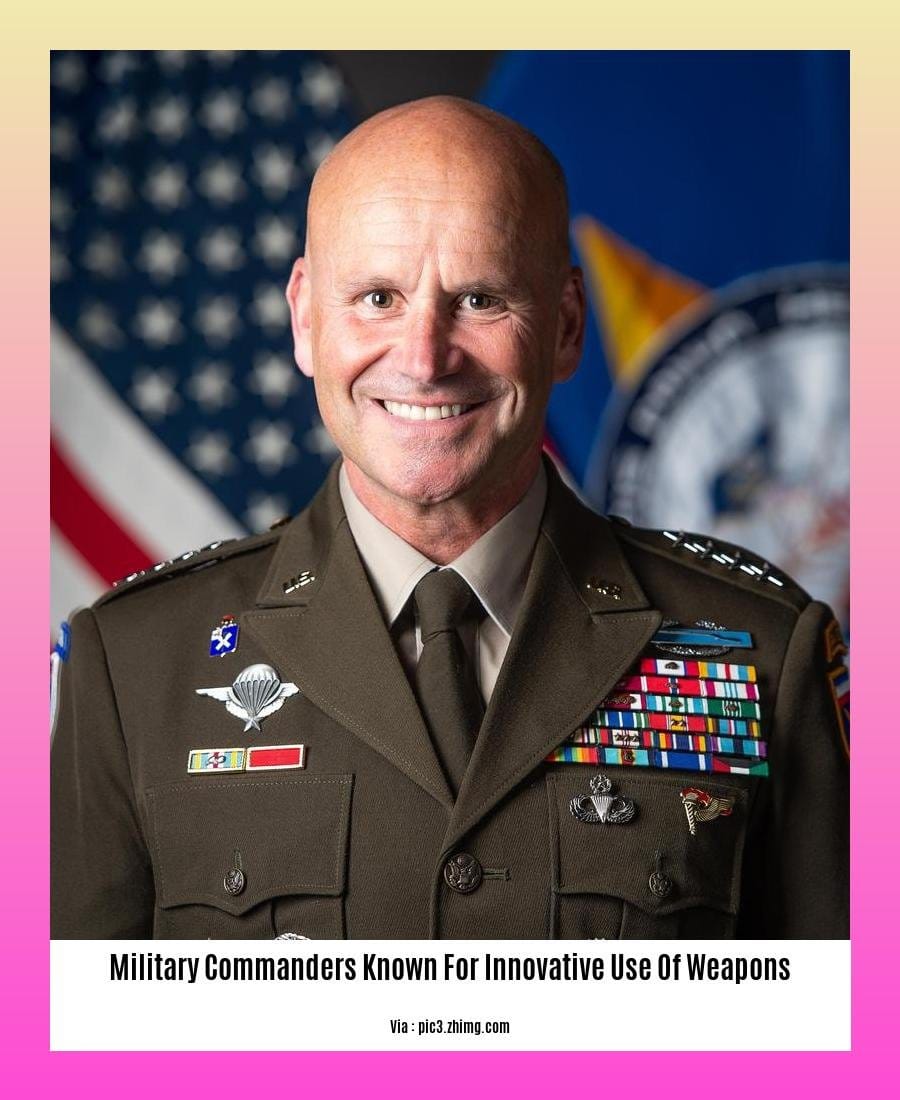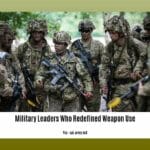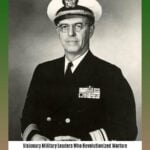In the annals of military history, certain commanders stand out as masters of innovation, employing weapons and tactics in groundbreaking ways to achieve victory. From the thunderous roar of artillery to the precision of firearms, from the devastating impact of special weapons to the intricate maneuvers of movement, these ingenious tacticians reshaped the art of war, leaving an enduring legacy on the battlefield. Join us as we delve into the strategies of history’s most influential military commanders, exploring their groundbreaking use of weapons: [Military Commanders Known for Innovative Use of Weapons: History’s Most Ingenious Tacticians].
Key Takeaways:
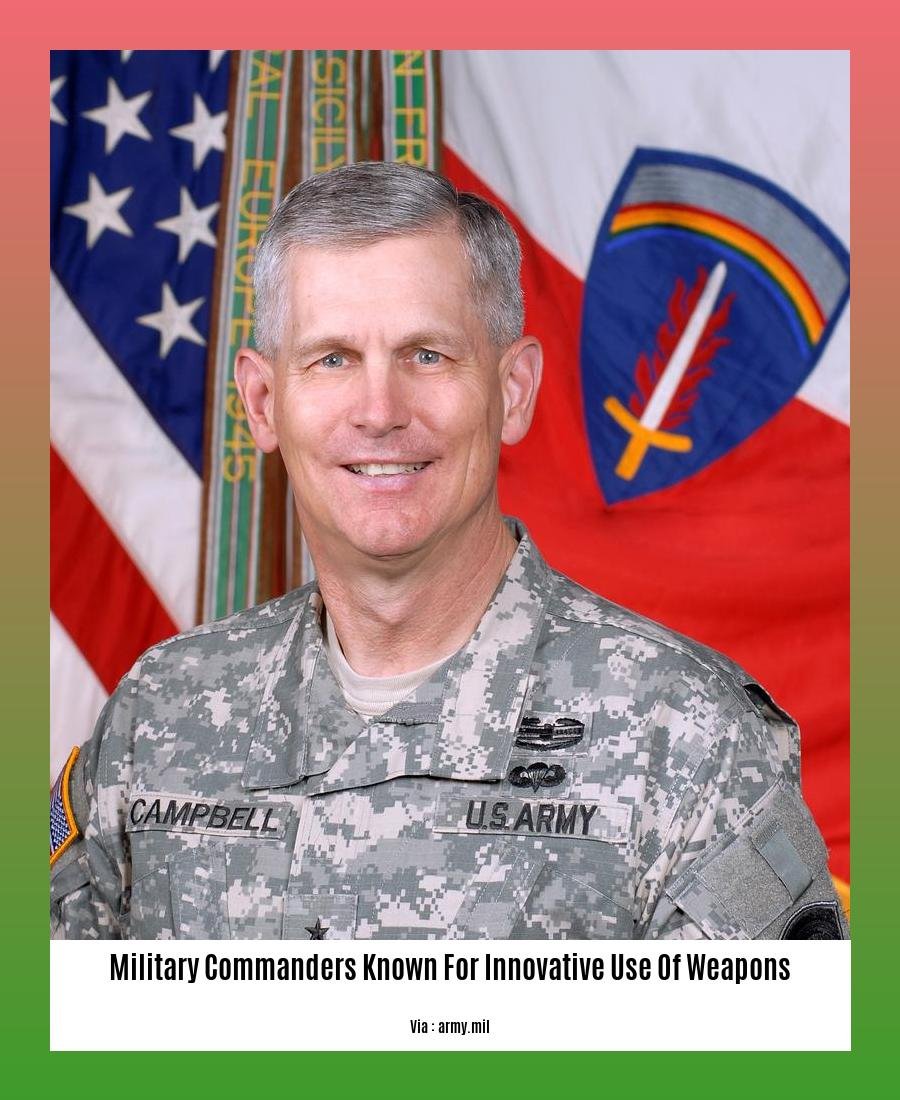
- The U.S. Department of Defense (DoD) has released a strategy to accelerate the adoption of advanced AI capabilities to ensure U.S. military superiority in AI technologies.
- The strategy focuses on three key areas:
- AI-enabled decision-making
- Autonomous and semi-autonomous systems
- Networked and collaborative combat systems
Military Commanders Known for Innovative Use of Weapons
Throughout history, military commanders known for innovative use of weapons have played a pivotal role in shaping the course of warfare. These trailblazers pushed the boundaries of military technology, devising ingenious strategies that gave them a decisive edge on the battlefield.
Sun Tzu
- Weapon: Psychological warfare
- Innovation: Emphasized the importance of deception, surprise, and demoralizing the enemy to achieve victory.
Alexander the Great
- Weapon: Macedonian phalanx
- Innovation: Used a disciplined formation of heavily armed infantry to overwhelm opponents, even in numerically superior situations.
Julius Caesar
- Weapon: Siege warfare
- Innovation: Developed elaborate siege machines, including the siege tower and the battering ram, to breach enemy fortifications.
Joan of Arc
- Weapon: Divine inspiration
- Innovation: Inspired her troops with her unwavering belief, leading them to numerous victories against the English during the Hundred Years’ War.
Napoleon Bonaparte
- Weapon: Artillery
- Innovation: Revolutionized artillery warfare, using massed batteries to overwhelm enemy forces.
Heinz Guderian
- Weapon: Panzer division
- Innovation: Spearheaded the development of Germany’s armored warfare doctrine, known as Blitzkrieg, which emphasized speed, maneuverability, and firepower.
George S. Patton
- Weapon: Armored warfare
- Innovation: Used tanks in unconventional ways, such as surprise flank attacks and rapid advances, to achieve stunning victories in World War II.
These commanders’ innovations transformed the art of warfare, proving that ingenuity and adaptability can overcome even the most formidable opponents.
Unleash the secrets of military innovation with the extraordinary minds who dared to challenge conventional weaponry! Discover the creative military weapon innovators and strategists who revolutionized warfare, the unorthodox new weapon concepts by commanders that defied norms, and the military leaders who redefined weapon use, leaving an indelible mark on the annals of combat.
Special Weapons
Throughout history, skilled military commanders have left an indelible mark on the art of warfare by their audacity and strategic ingenuity, particularly through the innovative utilization of special weapons. From Alexander the Great’s deployment of siege towers to the American Civil War’s introduction of ironclads, these weapons have revolutionized combat and shaped the course of military history.
Key Takeaways:
- Special weapons can bestow a strategic advantage by introducing novel capabilities or overwhelming the enemy.
- Military commanders have leveraged advancements in technology to develop special weapons with enhanced precision, range, and lethality.
- The innovative use of special weapons requires a keen understanding of their capabilities and limitations, as well as the ability to adapt tactics to exploit them effectively.
Citation:
Popular Mechanics
Movement
Innovation isn’t just about creating new weapons. Commanders like Hannibal have proven that thinking outside the box and using existing resources in unconventional ways can be just as effective. Military strategy is like a game of chess—adapt to the situation, think ahead, and use your pieces wisely.
Key Takeaways:
- Historically, militaries have pushed boundaries by exploring new technologies and strategies.
- By studying past innovations, we can learn from successes and avoid costly failures.
- Innovation often involves blending advanced technology with tactics to gain an edge.
- Artificial intelligence and autonomous weapons signal a new era of innovation in warfare.
Most Relevant URL Source:
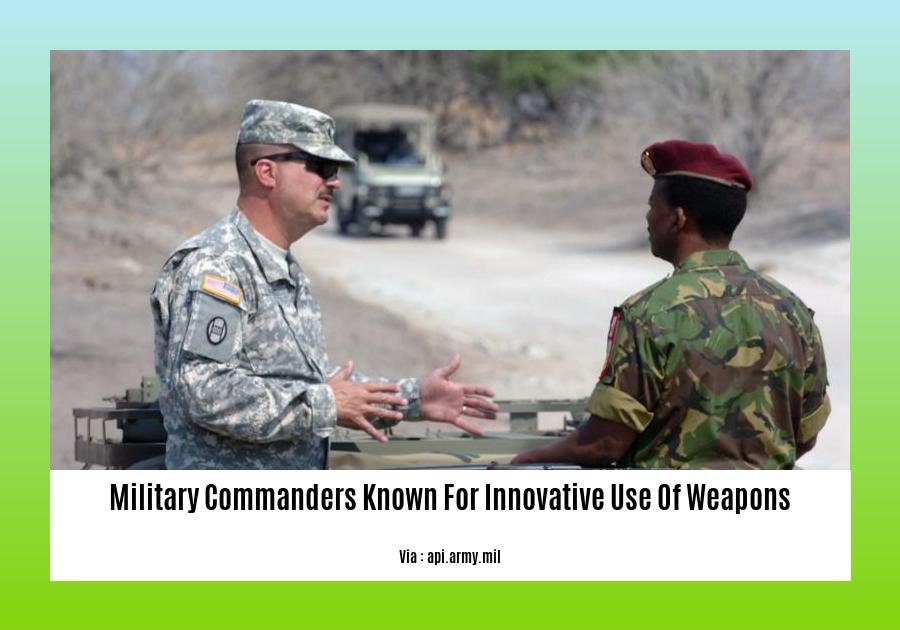
FAQ
Q1: How does the DoD’s AI adoption strategy aim to position the U.S. in AI-enabled technologies?
A1: The strategy focuses on three key areas: AI-enabled decision-making, autonomous and semi-autonomous systems, and networked and collaborative combat systems, positioning the U.S. as a leader in AI-driven military advancements.
Q2: What is significant about the Army’s deployment of Stryker vehicles with 50-kilowatt lasers to Iraq?
A2: These lasers, the most powerful ever deployed by the Army, provide precision, long-range, and high-speed engagement capabilities, offering enhanced protection against air threats and other incoming projectiles.
Q3: Why is studying historical lessons important for military innovation?
A3: Historical examples provide valuable insights into the effectiveness and adaptability of various strategies and technologies, helping to inform and shape current innovation efforts for optimal results.
Q4: How does the adoption of advanced technologies impact military capabilities?
A4: Advanced technologies, such as AI and autonomous weapons, enhance situational awareness, improve decision-making, and increase the precision and effectiveness of military operations.
Q5: What is a crucial factor in fostering innovation within the military?
A5: Providing combatant commanders with the necessary tools and resources is essential for effective and successful implementation of innovative strategies and technologies.
- SYBAU See You Baby Meaning: Gen Z Slang Evolves - July 1, 2025
- Unlock Your Inner Youth: Lifestyle Secrets for a Vibrant Life - July 1, 2025
- Decode SYBAU Meaning: Gen Z Slang Explained - July 1, 2025
